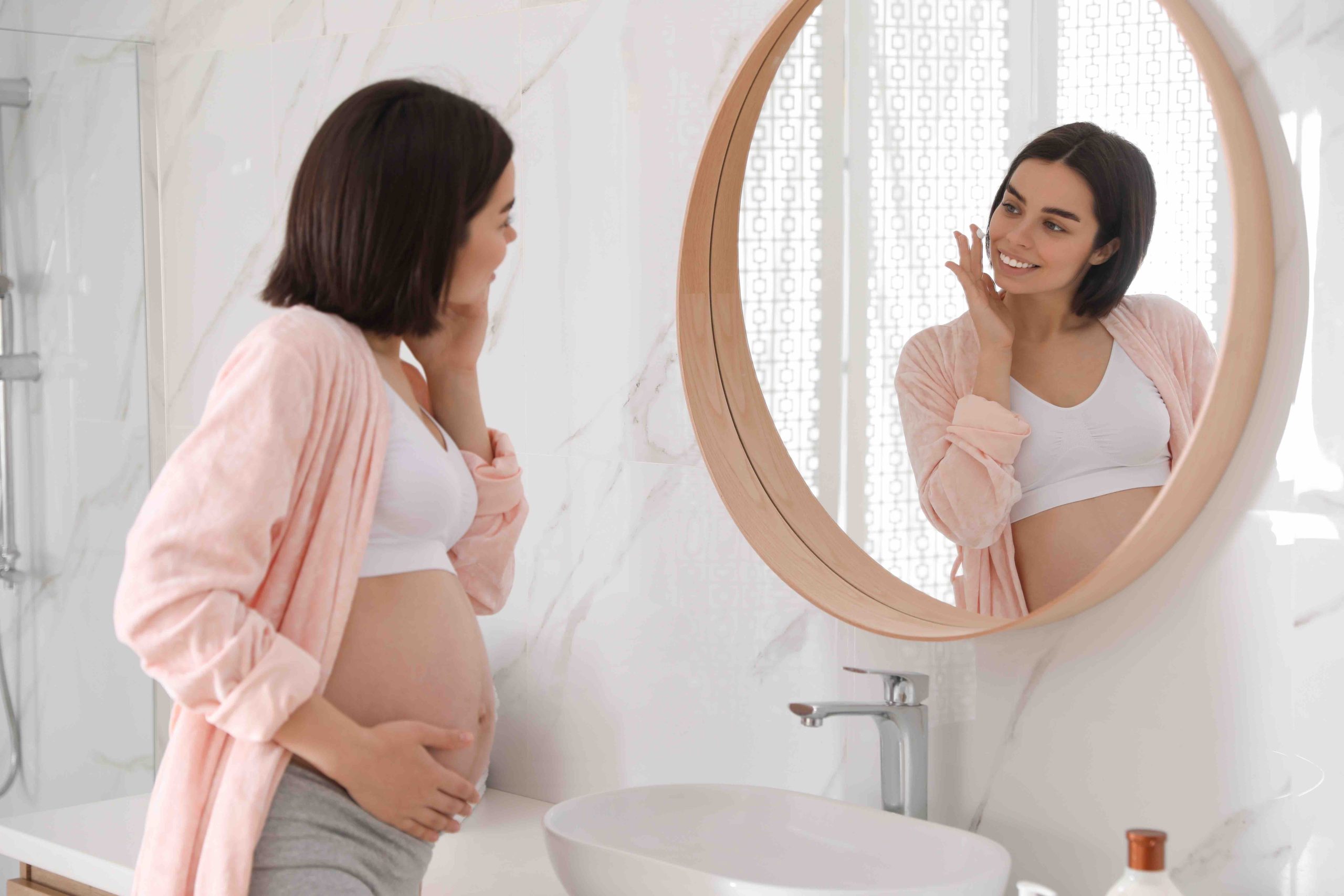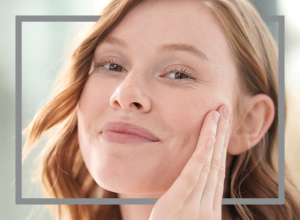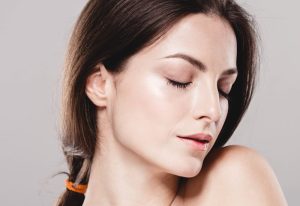It must be a wonderful moment when you find out that you are expecting a baby. In the course of pregnancy and breastfeeding, many expectant mothers realize that it can also be exhausting and that not only the body but also the skin texture changes due to the hormonal changes.
Facial skin is often particularly sensitive, so many pregnant women suffer more from dry skin or even oily or blemished skin. What can be done? Our article: Skin care for pregnant women – the right care, provides answers.
Problem skin during pregnancy
Improved blood circulation due to the change in metabolism during the months of pregnancy ensures firmer and rosy skin. This refers to the glow so often mentioned by pregnant women. This becomes more or less noticeable during the almost 40 weeks of pregnancy. But not every woman is lucky. Many pregnant women also often have skin that tends to be dry or blemished.
One of the causes is male hormones (androgens). However, stress and lack of sleep can also have a corresponding effect on the skin. This is particularly true at the beginning of pregnancy and also at the end. Many people then tend to have oily skin. If, on the other hand, there is an excess of oestrogen, the skin is more likely to be dry. In both cases, the right skin care products should be used. Skin that is more prone to dryness requires moisturizing care, whereas oily skin needs moisture but no fats or oils.
When choosing the right product, special attention should also be paid to the ingredients. After all, these should naturally support and not harm the unborn child. But here, too, special care must be taken. For example, certain essential oils can cause a risk of miscarriage or a higher risk of premature labor. They should therefore not be used.
The right care for facial skin
Sounds a bit complicated, doesn’t it? But it’s actually not that difficult. The most important thing for all skin types is the compatibility of the products. High-quality, nourishing plant-based active ingredients and natural oils should be used to protect mother and child. On the other hand, it is better to avoid high-dose salicylic acid or BHA products, for example, even if they are otherwise used to combat blemishes. However, it is advisable to avoid them for skin care during pregnancy. This also applies to retinol, parabens, silicones, preservatives and allergenic ingredients.
Ingredients such as vegetable oils, hyaluronic acid, vitamin C, urea or glycerine are considered safe during pregnancy and breastfeeding. Gentle daily cleansing is also important for facial skin, e.g. with the skinicer Repair Cleanser, which cleanses with:
- active washing substances on a natural coconut basis and is gentle and thorough.
- Willow bark extracts from controlled organic cultivation. These gently remove excess flakes of skin.
- with a pH value of 5.1, which means that the skin’s natural pH range is not affected and the skin is not additionally stressed.
Intensive moisture can be added to the skin once a week with a mask. The skinicer Repair Mask tightens pores, relaxes, stimulates and supports the skin’s natural healing processes. This provides optimal support.
Tip: Drinking plenty of fluids and eating a balanced diet with lots of vitamins and minerals also helps to support the skin.
What exactly does the skin need?
But it’s not just the facial skin that needs special care and support. Whether for the prevention of pigmentation disorders, pregnancy marks on the stomach and breasts, water retention or an altered décolleté.
Prevention of pigmentation disorders
Pigmentation disorders are not uncommon during pregnancy. The most common form of hyperpigmentation is called melasma. These appear on the face, but also on the back or chest. A change in the hormone balance, a hereditary predisposition, the use of medication and, above all, sunlight can be the causes. In most cases, they disappear of their own accord.
Mild skin care products that do not irritate the skin can also help. Mineral sunscreen for the face and décolleté and protective clothing are also recommended in times of high UV radiation.
Pregnancy marks on the stomach and chest
So-called stretch marks are a common side effect during pregnancy. The connective tissue of the abdomen and breasts is particularly challenged during this time. If the stretching is too strong, small, fine tears appear, which can also change in color and size over the course of the pregnancy. A complete recovery is often not possible. However, these can be made smaller and less visible with targeted treatments.
It can be prevented by strengthening the connective tissue and promoting blood circulation and elasticity in the skin areas.
A tip: Brush massages stimulate blood circulation and strengthen the connective tissue. Some women also suffer from a feeling of tightness in the décolleté area during this time. Gentle massages and alternating hot and cold showers can help here. A moisturizing skin care product with urea and vitamins helps to provide the skin with the moisture and support it needs at this time.
Water retention
Water retention can occur in the last trimester of pregnancy in particular. This is because the blood vessels are then more permeable and more fluid can leak into the surrounding tissue. If, for example, your arms, legs and face are swollen in the morning, exercise, sleeping with your legs elevated, a healthy diet, loose-fitting clothing or alternating hot and cold showers can help.
If you would like more information on skin and lip care during pregnancy and breastfeeding, we look forward to your visit to our expert tips. Articles such as – How dangerous is herpes for children and babies? or Skin blemishes and acne in adults can provide further interesting tips here.
Image source: New Africa / stock.adobe.com
Experten-Tipp entstand in Zusammenarbeit mit:
Patrick Günther
Patrick Günther completed his pharmacy studies in Hamburg and, after obtaining his licence to practise, worked for several years in marketing and sales in the pharmaceutical industry. In 2003, he took over ocean pharma, the company founded by his father in Reinbek near Hamburg in 1978. Together with his business partner, he patented the important processing and standardisation process for the microalgae active ingredient Spiralin® and developed a wide range of medical cosmetics and foot care products based on Spiralin®.







